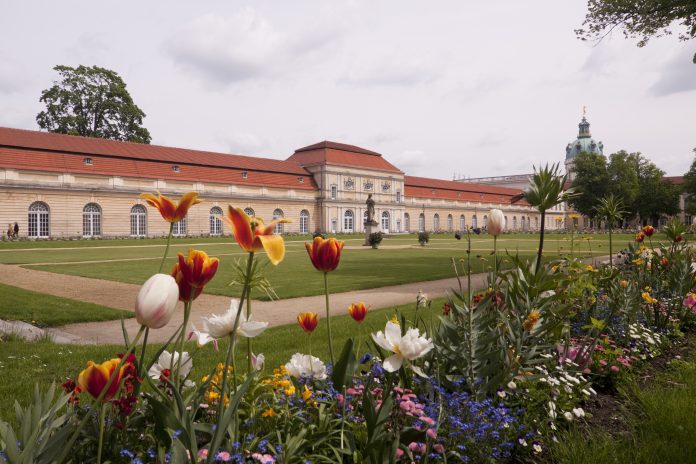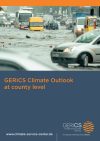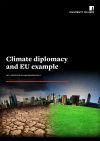Lola Kotova from Climate Service Center Germany (GERICS) unpacks climate information for strengthening the resilience of cultural heritage in times of anthropogenic climate change, presenting in this vein a fascinating case study for Germany
The impacts of climate change, particularly extreme weather events, on European cultural heritage have progressed at an unprecedented speed and scale in recent years. According to the final report of the European Union Open Method of Coordination (OMC) expert group, archaeological sites, museum collections and historical buildings are affected, among others, by more frequent heatwaves, severe precipitation events and heavy windstorms. (1) The following damages to cultural heritage are often observed in Central Europe (2):
- At site level:
- Erosion, soil displacement, earth deposition, forest or park damage, and individual tree damage.
- At the building level:
- Material degradation, roof and façade damage, and primary and secondary structural damage.
- At the object level (i.e., movable heritage):
- Widespread damage to furniture and musical instruments, objects of art, books and papers, plus glass and ceramic objects.
In this case, reliable climate information is required to develop appropriate preservation strategies and measures to protect and adapt cultural heritage to climate change. It is essential to know how the climate will change in the future at the sites where the cultural heritage is located and to what frequency and extent the future climate will influence historic sites.
Protecting cultural heritage from extreme climate events
To address this, the German Federal Ministry of Education and Research launched the KERES project in 2020. The project’s primary focus is protecting cultural heritage from extreme climate events and increasing the resilience of selected cultural heritage sites in Germany. Five case studies, including historical buildings and gardens, are chosen for the project. These are the Charlottenhof Palace and Park in Sanssouci, Potsdam; the Frauenberg Chapel in Sufferloh, Bavaria; Cologne Cathedral; Franconian Open Air Museum in Bad Windsheim and the City of Warehouses (The Speicherstadt) in Hamburg (see Figure 1).

The main idea behind the three-year research project is to use an ensemble of climate simulations from which the input for building simulation tools is generated. These results serve as the basis for assessing the potential damage risk.
The KERES database consists of an ensemble of high-resolution climate simulations from 1970 to 2100 with hourly temporal resolution. (3) Climate projections are based on the RCP 8.5 emission scenario. This Representative Concentration Pathway (RCP) illustrates the bandwidth of possible future greenhouse gas emission trajectories; it is a highly energy-intensive scenario due to high population growth and a lower rate of technological development. The database’s climate variables include near-surface air temperature, liquid plus solid precipitation, wind speed at 10m, cloud cover, surface pressure, relative humidity and solar radiation. In addition, several observational datasets for selected case studies are stored in the KERES database.
The ensemble of climate simulations in KERES spans various future climate development possibilities in projections. With this, the robustness of the projected changes can be evaluated. “Robust” is defined as the agreement of simulations toward the projected changes and with the portion of the simulations that project statistically significant changes. (4)
The Climate Facts Sheets (CFS) for the selected cultural heritage sites have been developed as an output of the project. The Climate Fact Sheets give a snapshot of the key findings on the magnitude and the range of projected climate change. It highlights climate information and data needs for further actions on adaptation, mitigation and resilience planning in the cultural heritage sector. KERES CFS primarily assesses climatic variables relevant to specific cultural heritage sites. These are, among others, temperature extremes, heavy rainfall, and intense wind events.
Projected changes in heat extremes
Figure 2 shows the changes in median in heat extremes that might affect the Charlottenhof Palace and park in the future. The climate change signal is derived for 2036-2065 and 2068-2098 and compared to 1971-2000. It is projected to experience further increases in hot days with maximum temperature >30°C and tropical nights with daily minimum temperature >20°C. The robust signals can be derived for both time slices for RCP8.5.

More information about the KERES project can be found here:

Literature
- European Commission, Directorate-General for Education, Youth, Sport and Culture, Strengthening cultural heritage resilience for climate change: where the European Green Deal meets cultural heritage, Publications Office of the European Union, 2022, https://data.europa.eu/doi/10.2766/44688
- Cacciotti R, Kaiser A, Sardella A, De Nuntiis P, Drdácký M, Hanus Ch, Bonazza A. Climate change-induced disasters and cultural heritage: Optimizing management strategies in Central Europe. Climate Risk Management. 2021;32. https://doi.org/10.1016/j.crm.2021.100301.
- Kotova, L., Leissner, J., Winkler, M. et al.Making use of climate information for sustainable preservation of cultural heritage: applications to the KERES project. Herit Sci11, 18 (2023). https://doi.org/10.1186/s40494-022-00853-9
- Pfeifer, S.; Bülow, K.; Gobiet, A.; Hänsler, A.; Mudelsee, M.; Otto, J.; Rechid, D.;
Teichmann, C.; Jacob, D. Robustness of Ensemble Climate Projections Analyzed with Climate Signal Maps: Seasonal and Extreme Precipitation for Germany. Atmosphere 2015, 6, 677-698, doi:3390/atmos6050677 (http://dx.doi.org/10.3390/atmos6050677).
More About Stakeholder
-
Climate Service Center Germany (GERICS)
The Climate Service Center Germany (GERICS) was initiated by the German Federal Government in 2009 as a fundamental part of the German hightech-strategy for climate protection. Since June 2014, GERICS has been a scientific organizational entity of Helmholtz-Zentrum hereon GmbH. The director of GERICS is meteorologist and climate scientist Prof. Dr. Daniela Jacob. Mission […]





























